Trump's Tariffs on Canada and Mexico to Spike Food, Gas Prices
The neighboring countries are major exporters of fresh food, auto, gas, and industrial supplies to the U.S.
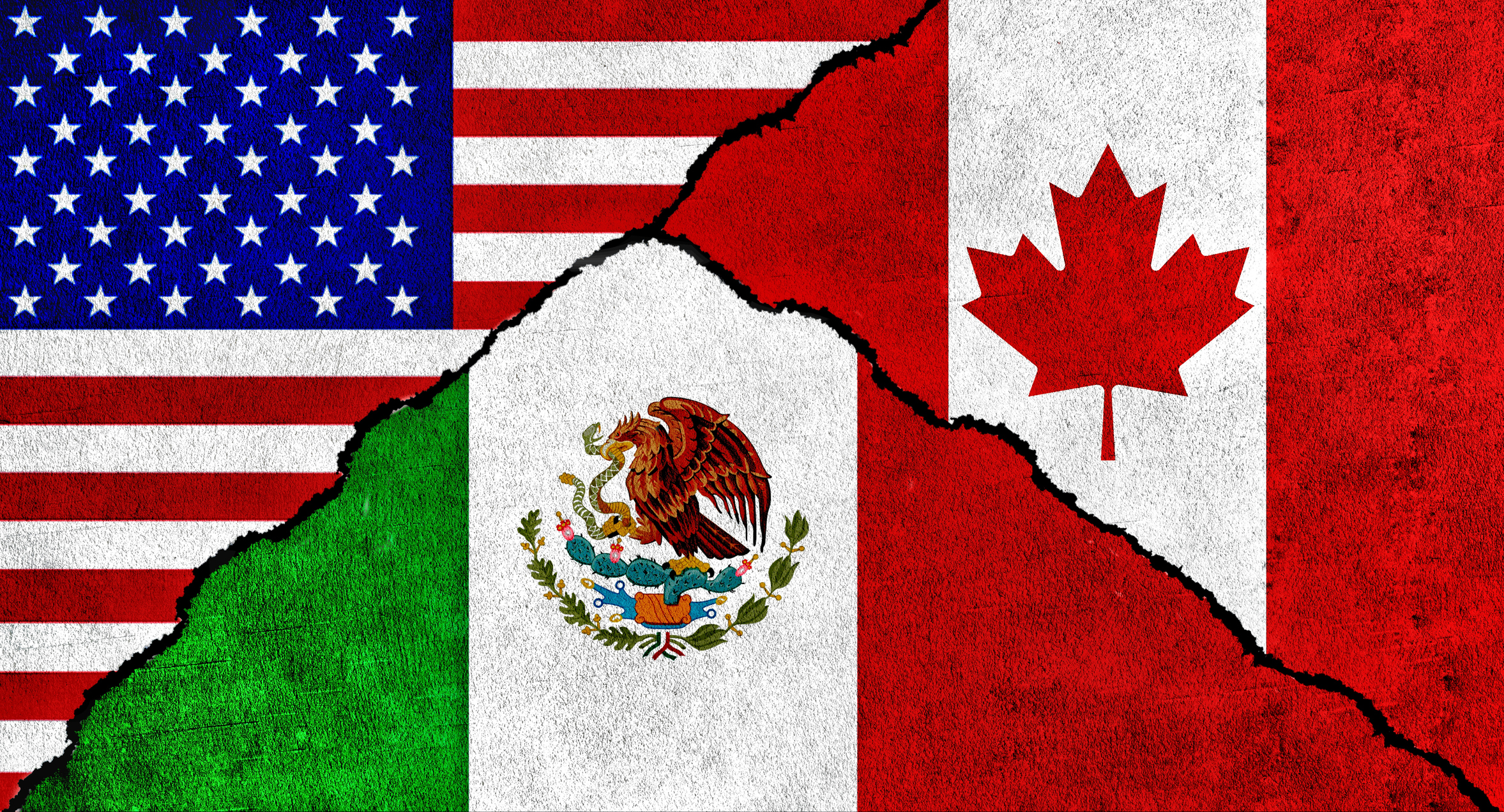

President Donald Trump is using tariffs as a bargaining chip with the United States' top trading partners. It’s likely to hurt your wallet.
After initially planning to levy 25% tariffs on Mexico and Canada last month, the Trump administration pulled that plan back after reaching a deal with the leaders of the neighboring countries in early February. However, that 30-day pause is over and Trump's latest proposal, levying the tariffs on March 4, has gone into effect.
Mexico and Canada are two of the United States’ top trading partners. Aside from the European Union, which is comprised of 27 sovereign nations, Mexico is the largest source of all U.S. imports.

Sign up for Kiplinger’s Free E-Newsletters
Profit and prosper with the best of expert advice on investing, taxes, retirement, personal finance and more - straight to your e-mail.
Profit and prosper with the best of expert advice - straight to your e-mail.
Economists warn that tariffs on China, Mexico, and Canada can impact the cost of everyday essentials like food, gas, and clothing. It'll also put upward pressure on inflation.
Here’s where you could see prices rise sooner than you think if Trump imposes the tariffs, beginning with a quick recap of where things stand with the trade war.
Key Points
- Trump reached a deal in early February with Mexico’s President Claudia Sheinbaum Pardo and Canada's outgoing Prime Minister Justin Trudeau, agreeing to a 30-day delay on tariffs as long as they reinforce border security.
- The Trump administration had planned steep tariffs in retaliation for allowing illicit drugs and migrants to cross the border, the White House said.
- The U.S. also hit China with a unilateral 10% tariff on all imported goods on Feb. 1, 2025. China retaliated with 10% and 15% tariffs on targeted U.S. imports and a lawsuit. China's duties were planned for as soon as Feb. 10.
- Trump floated a March 4 date to impose the 25% tariffs and has just followed through with that threat.
- Canada's response was immediate, with outgoing Prime Minister Justin Trudeau imposing a 25% tariff on $20 billion of U.S. goods and planning more tariffs.
- China, facing its own tariff increase, also reportedly plans to impose duties on U.S. agricultural products. Mexico is expected to announce its response soon.
Food prices could spike across the board
Meanwhile, prices in the grocery aisle can already leave you with a bad taste, and a potential full-blown trade war will likely worsen it. The cost of food is currently 25% higher than pre-COVID levels, the Food Industry Association said, and it doesn’t seem to be easing anytime this year.
Mexico and Canada are two of the United States’ top trading partners. Mexico is the largest supplier of fresh fruit and vegetables to the U.S., responsible for 92% of all agricultural imports, according to the latest government data. It’s also a major supplier of distilled spirits, per the International Food Policy Research Institute.
A 25% tariff on Mexico will cause the cost of fresh vegetables, fresh fruit and berries, baked cereals, and avocados to rise.
Outgoing Canadian Prime Minister Justin Trudeau previously said U.S. consumers will pay more if Trump imposes tariffs on Canadian goods. For Trudeau, nothing was going to be “off the table” as the country considers retaliatory tariffs on beverages like Florida orange juice and other goods due to Trump's 25% tariffs on all Canadian imports. The list may go on.
According to the U.S. Department of Agriculture, Canada is a major supplier of essentials on your grocery list. Just to name a few: baked goods, cereals, pasta, vegetable oils, beef products, live animals, chocolate, and other grain products are imported from Canada.
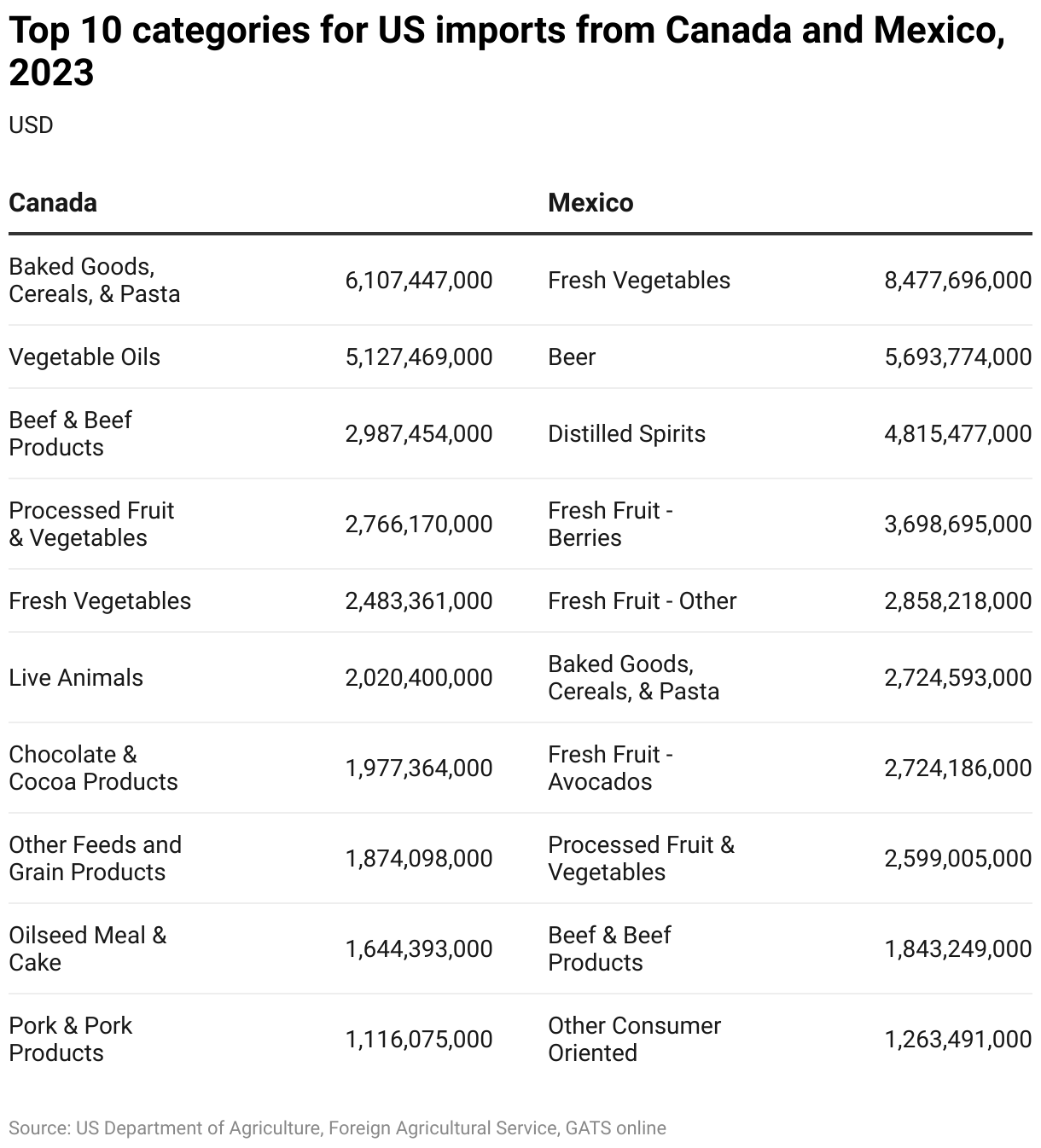
The price of vehicles could rise significantly
Purchasing a car or auto parts will become even more expensive if tariffs are levied on Canada and Mexico.
The steep tariffs would interrupt supply chains from the auto industry causing the spike in prices, Wells Fargo analysts warned. Canada and Mexico are considered top exporters of automotive parts and vehicles to the U.S.
Prices for U.S.-made automobiles could rise as much as $2,100 once tariffs are imposed, Fortune first reported. Additionally, vehicles manufactured completely in Canada and Mexico may cost as much as $8,000 to $10,000 more.
Hardest hit companies include some of the biggest U.S carmakers — General Motors (GM), Ford, and Stellantis. All three have manufacturing plants in Mexico and Canada and could stand to lose between $5 to $9 billion.
Some GM vehicles manufactured in Mexico include the Chevrolet Blazer, Chevy Equinox, and Cadillac Optiq, all made in the Ramos Arizpe plant. There’s also the Chevy Equinox EV.
As Kiplinger reported, electric vehicles may also be hit by a separate Trump policy that aims to eliminate up to $7,500 federal tax credit for EV purchases.
Gas prices to rise in the U.S.
Prices as the gas pump would rise more than expected under Trump's 25% tariffs on Canadian imports.
Canada is a main source of crude oil imports and industrial supplies like steel for the United States. More than 71% of U.S. crude oil imports were supplied by Canada and Mexico in 2023, according to a new report from the Congressional Budget Office (CBO). Of that share, 60% of oil came from Canada.
The steep 25% tariffs could impact consumer prices for gasoline, diesel fuel, and other petroleum products across the country. Some states will be more affected than others by tariffs, mainly the Midwest.
That’s bad news, given that gas prices are already on the rise due to seasonal patterns, and are slated to reach $3.50 per gallon by spring.
The premier of Ontario, Doug Ford has been more forthcoming about the implications of Trump’s tariffs, noting that Canada won’t remain complacent.
“We will cut off energy down to Michigan, over to New York State, and over to Wisconsin,” Ford said in a report by the Associated Press. “I don’t want this to happen.”
Tariffs would lead to higher inflation
If you were expecting inflation to go down, tariffs won’t be the solution.
A new Wells Fargo report found that imposing 25% tariffs on all imports from Mexico and Canada on February 1, would lead to retaliation and result in slower domestic growth for the U.S. and higher consumer prices.
Model simulations show that the annual rate of consumer price inflation would be half a percentage point higher by the year-end if Trump’s tariffs were enacted. By comparison, GDP growth would fall by a full percentage point relative to the expected baseline this year.
Trump tariffs Bottom line
Tariffs are an overarching theme during the Trump administration’s second term, and economists warn it may have collateral damage on your wallet.
As reported by Kiplinger, prices of everyday goods will spike if steep tariffs are enacted. The U.S. imported nearly $500 billion worth of merchandise from Mexico, and $410 billion from Canada in the twelve months leading up to November 2024.
While Canada and Mexico account for just under 30% of all U.S. goods imports, its categories are crucial for the United States. Auto parts and manufactured vehicles, crude oil, and fresh foods and vegetables are some areas that may be hard hit by Trump's 25% tariffs.
Economists say Trump’s tariffs will ignite a trade war, which will increase U.S. consumer prices and impact Canada and Mexico’s economies. So far, Canada and Mexico's leaders have responded with retaliatory measures.
As reported, tariffs levied on foreign nations are paid by U.S. importers. That means a 25% tariff on Canadian goods will be paid by the U.S.-based importer, and that cost is generally passed to consumers like you so businesses can make a profit.
The U.S. Mexico-Canada Agreement (USMCA) is set to be reviewed next year; these tariff discussions may speed up that timeline.
Stay informed, as these looming changes can impact your wallet.
Related Content:
- Tariffs Could Make Your Shopping Pricier in 2025
- Tariffs: What They Are and How They Impact Your Wallet
- Is Trump Taking the EV Tax Credit Away? What You Need to Know
Get Kiplinger Today newsletter — free
Profit and prosper with the best of Kiplinger's advice on investing, taxes, retirement, personal finance and much more. Delivered daily. Enter your email in the box and click Sign Me Up.

Gabriella Cruz-Martínez is a seasoned finance journalist with 8 years of experience covering consumer debt, economic policy, and tax. Before joining Kiplinger as a tax writer, her in-depth reporting and analysis were featured in Yahoo Finance. She contributed to national dialogues on fiscal responsibility, market trends and economic reforms involving family tax credits, housing accessibility, banking regulations, student loan debt, and inflation.
Gabriella’s work has also appeared in Money Magazine, The Hyde Park Herald, and the Journal Gazette & Times-Courier. As a reporter and journalist, she enjoys writing stories that empower people from diverse backgrounds about their finances no matter their stage in life.
-
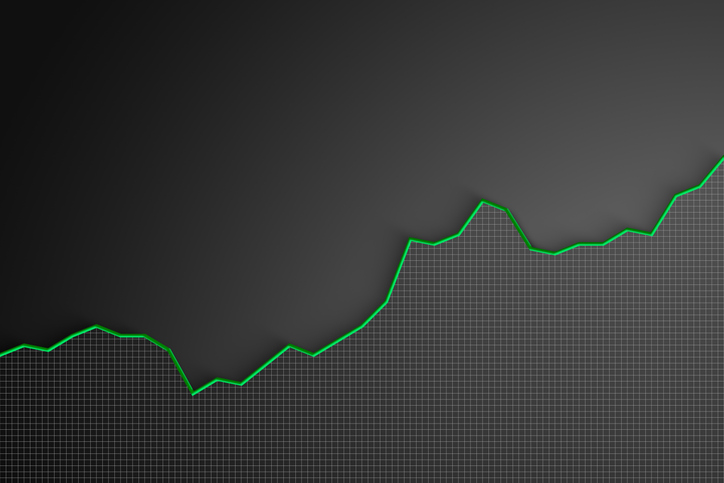 Stock Market Today: Stocks Soar on China Trade Talk Hopes
Stock Market Today: Stocks Soar on China Trade Talk HopesTreasury Secretary Bessent said current U.S.-China trade relations are unsustainable and signaled hopes for negotiations.
By Karee Venema
-
 2026 Disney Dining Plan Returns: Free Dining for Kids & Resort Benefits
2026 Disney Dining Plan Returns: Free Dining for Kids & Resort BenefitsPlan your 2026 Walt Disney World vacation now. Learn about the returning Disney Dining Plan, how kids aged three to nine eat free, and the exclusive benefits of staying at a Disney Resort hotel.
By Carla Ayers
-
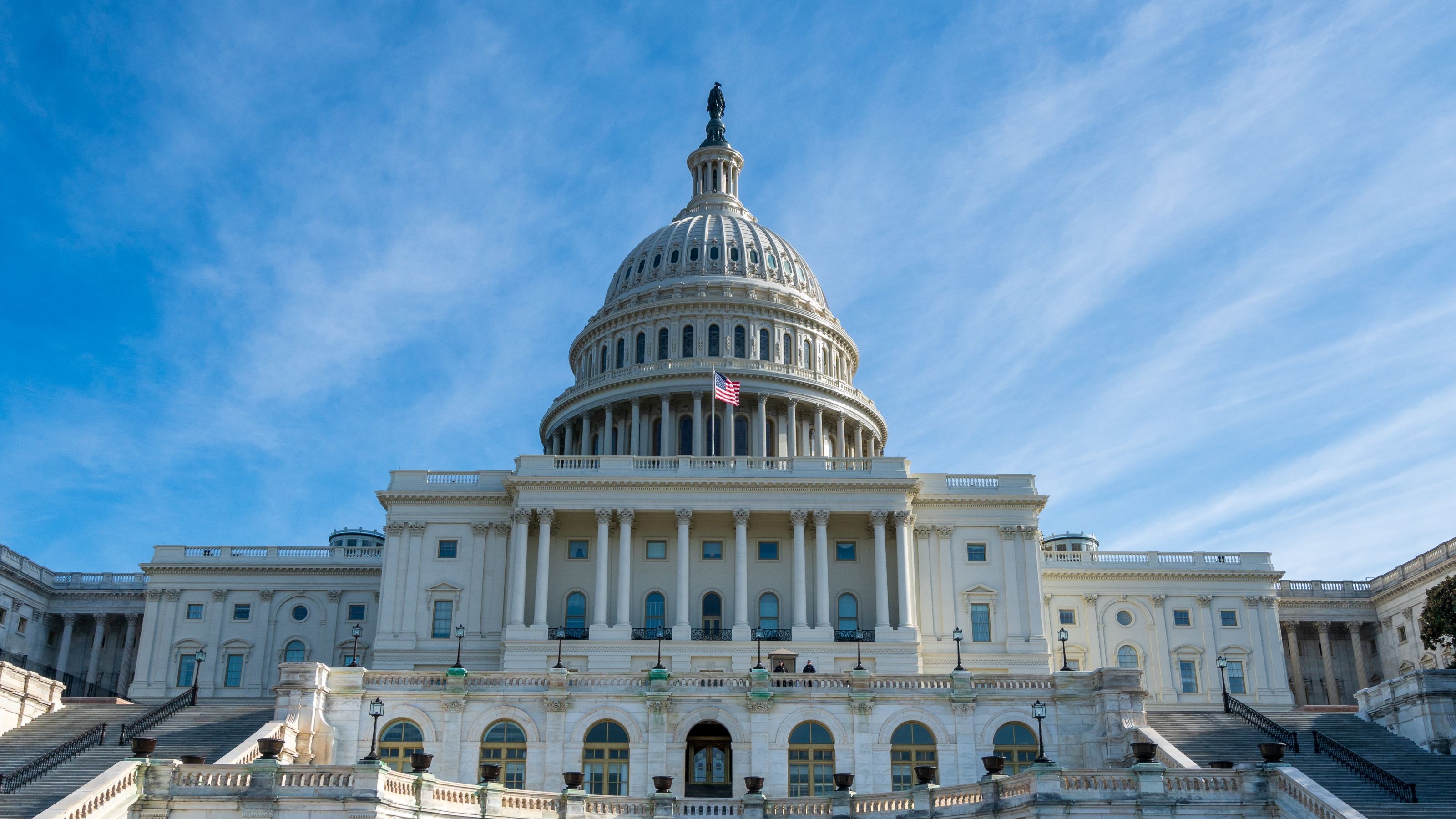 Trump’s Tax Cut Risks Your SNAP, Medicaid Benefits
Trump’s Tax Cut Risks Your SNAP, Medicaid BenefitsTax Cuts The GOP budget blueprint could slash lifesaving programs for millions of U.S. households.
By Gabriella Cruz-Martínez
-
 How Many IRS Commissioners Have We Gone Through This Year?
How Many IRS Commissioners Have We Gone Through This Year?IRS Who were the former IRS commissioners, and why did they resign? Find out how IRS turnover can impact your taxes.
By Kate Schubel
-
 How the Trump Harvard IRS Tax Threat Could Impact You
How the Trump Harvard IRS Tax Threat Could Impact YouTax Law Trump's latest higher education showdown raises fundamental questions that could reach beyond Harvard's nonprofit tax status.
By Kelley R. Taylor
-
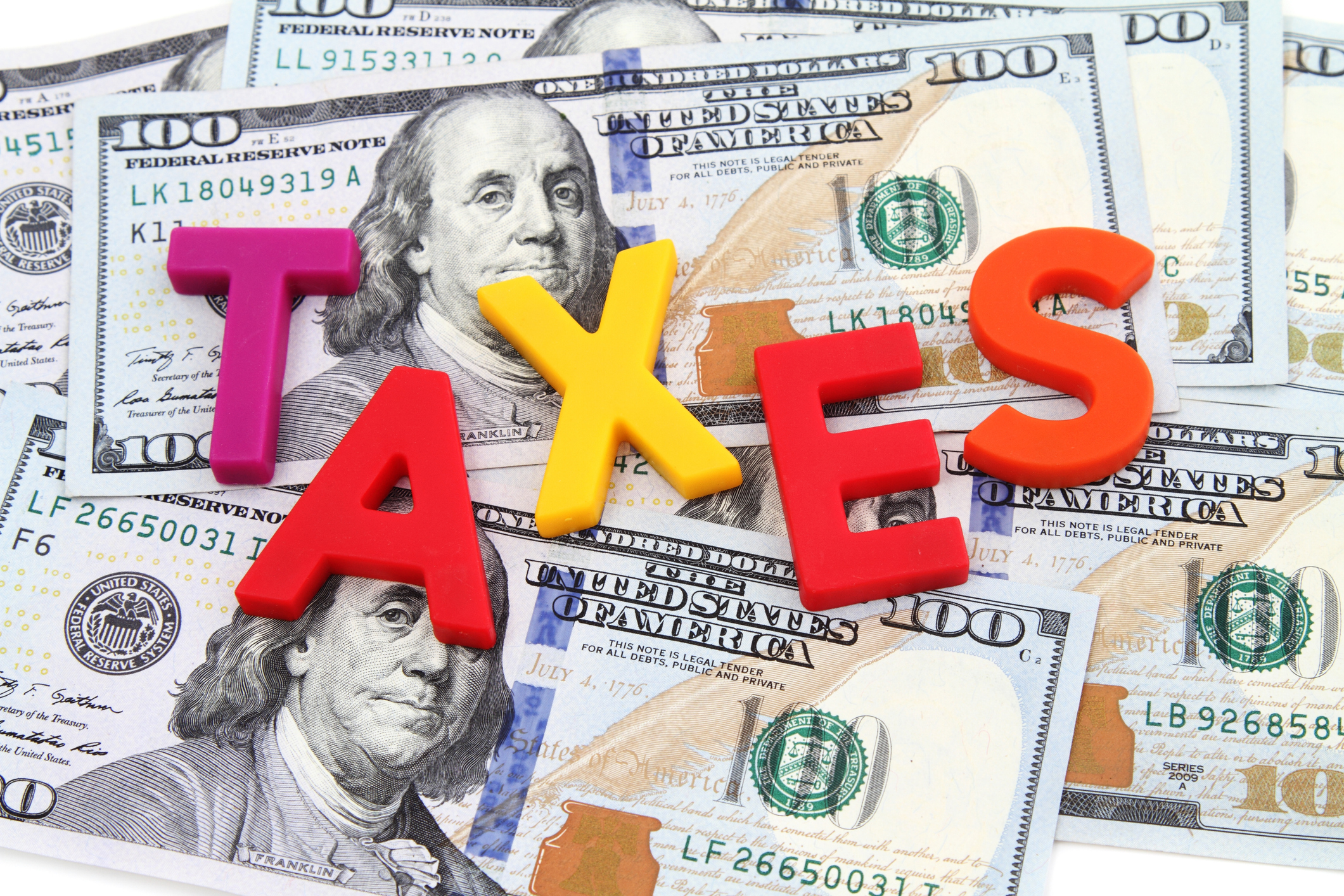 Tax Time: Does Your Kid Influencer Owe Taxes?
Tax Time: Does Your Kid Influencer Owe Taxes?State Tax Some minors are making big money on social media. Here’s how to know if they need to file taxes.
By Gabriella Cruz-Martínez
-
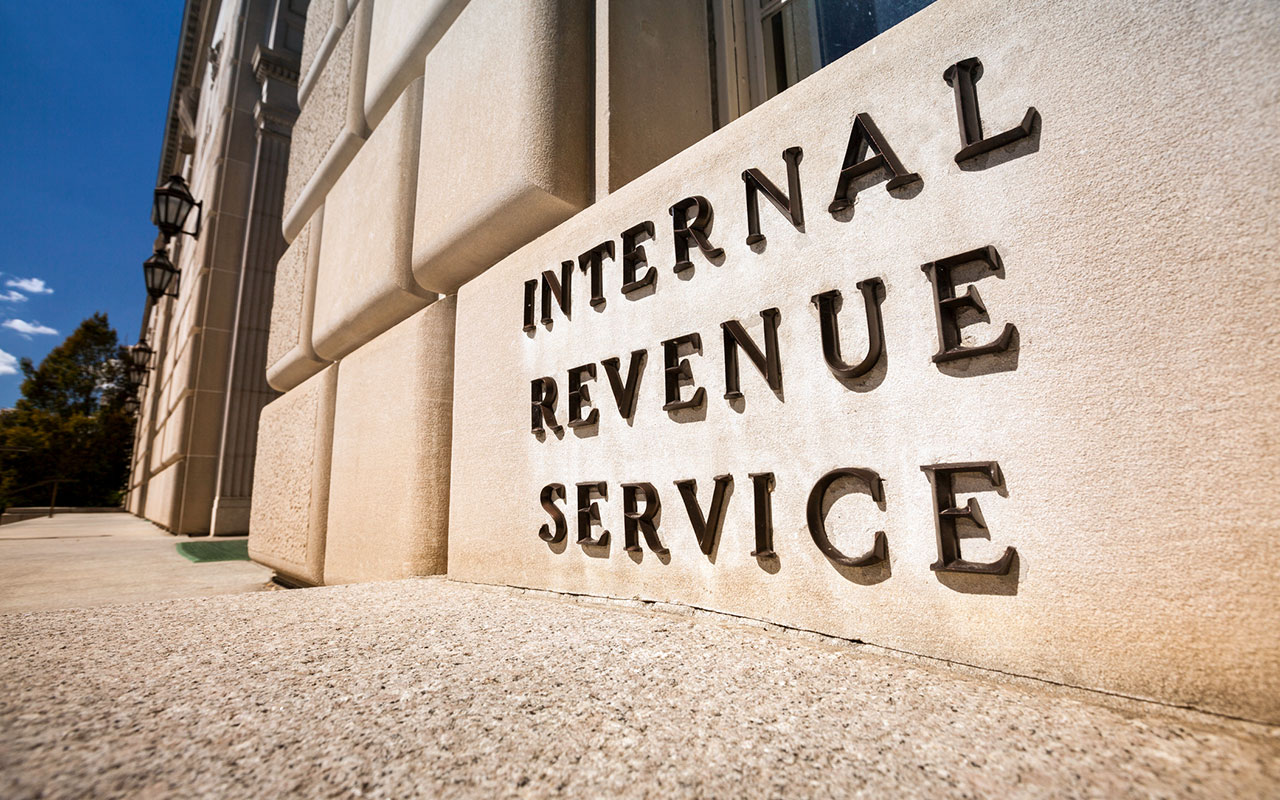 Trump Plans to Terminate IRS Direct File program
Trump Plans to Terminate IRS Direct File programTax Filing The IRS Direct File program was piloted last year in 12 states and has since expanded to 25. But will it last under the Trump administration?
By Gabriella Cruz-Martínez
-
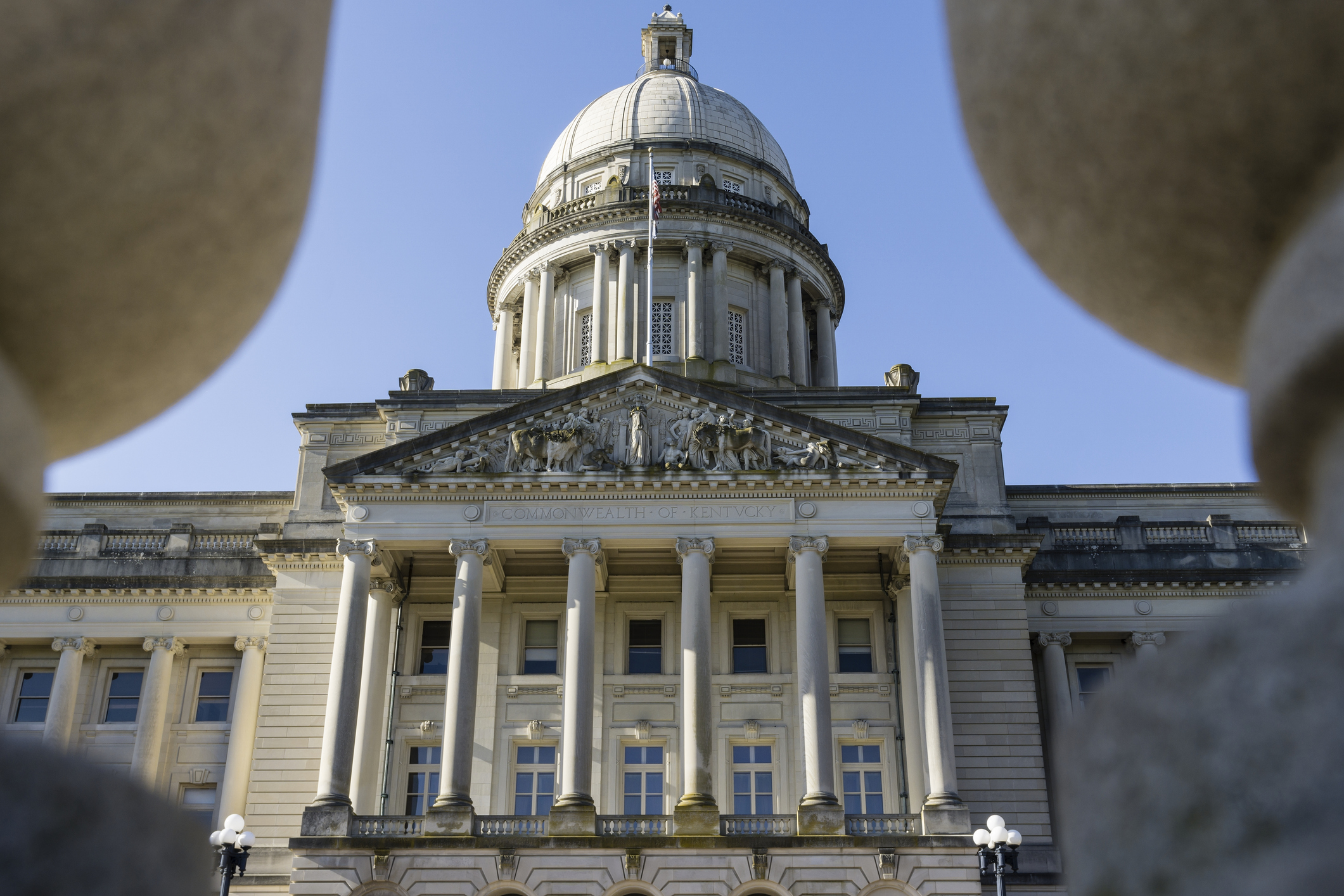 Kentucky Tax Deadline Extension Might Cost You More Money: What to Know
Kentucky Tax Deadline Extension Might Cost You More Money: What to KnowState Taxes Kentucky flooding and storms caused the IRS and state to extend the 2025 tax filing deadline. But should you file later?
By Kate Schubel
-
 Are You Ready to Pay More Taxes to Save Social Security?
Are You Ready to Pay More Taxes to Save Social Security?Social Security Across party lines, many believe saving Social Security trumps other financial considerations.
By Kelley R. Taylor
-
 Could Your State End Tax on Overtime This Year?
Could Your State End Tax on Overtime This Year?State Taxes Key states are considering ending taxes on overtime — find out if yours makes the cut.
By Kate Schubel